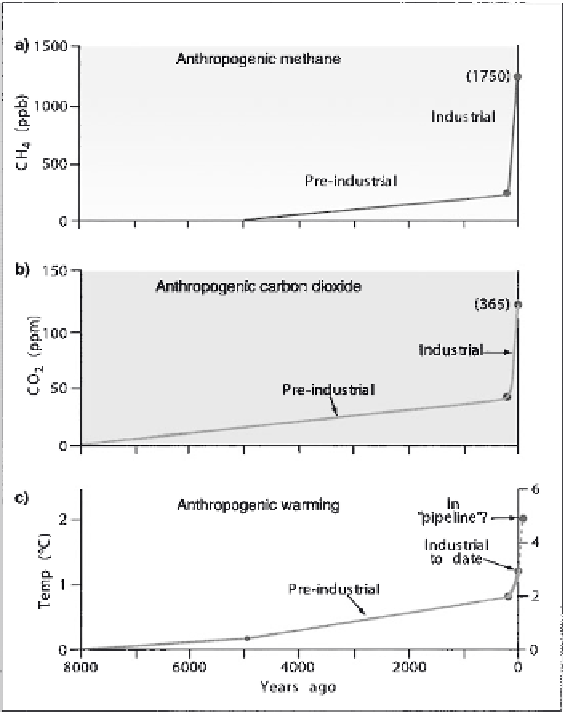Geology Reference
In-Depth Information
Figure 15.1.
Anthropogenic changes in (a) CH
4
, (b) CO
2
, and (c) global high-latitude temperature
based on the 2001 Intergovernmental Panel on Climate Change, Third International Assessment
Review estimate of the sensitivity of the climate system. According to Ruddiman (2004), pre-
industrial anthropogenic changes are similar to those of the industrial era.
groundwater resources, and the water balance (see Slaymaker and French, 1993; Woo
et al., 1992). The northern limits of the boreal forest, shrub-tundra, and tundra ecozones
may shift northwards by several hundreds of kilometers. A number of feedback mecha-
nisms will also come into play. These include: (i) increased methane fl ux due to the
decomposition of organic matter frozen in permafrost and decomposition of methane
hydrates, (ii) increased biomass production and decay in tundra and taiga zones, and (iii)
decreased surface albedo as snow-cover extent and duration decrease.
In the last 15 years, a number of international science programs have been initiated
that are of direct relevance to these predicted changes. They include the European Union
4th Framework Project entitled “Permafrost and Climate in Europe” (PACE), the Global
Terrestrial Observing System (GTOS) of the Global Climate Observing System (GCOS),
and several impact studies sponsored by the International Arctic Science Committee and
The International Permafrost Association (The Bering Sea Impact Study - BESIS; The
Barents Sea Impact Study - BASIS; Arctic Coastal Dynamics - ACD). A large number

